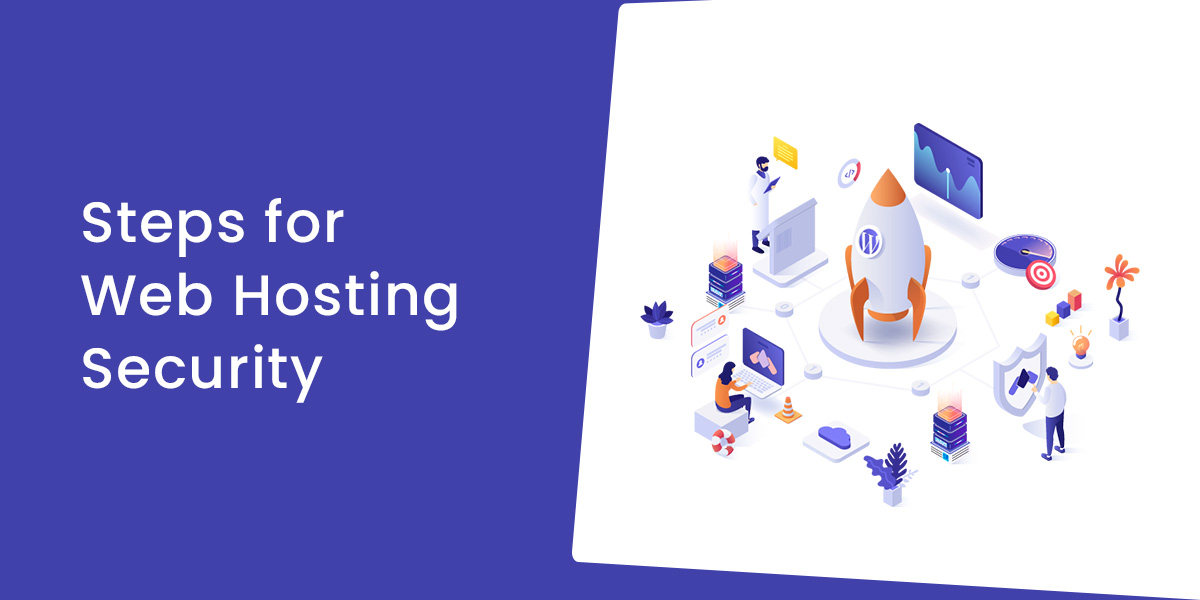
Making your web hosting a security system is something that IT needs to consider very seriously as businesses expand their web presence in the Cloud. They may use a managed service provider (“MSP”) to host their website. You need to be sure that your website security system is safe and secure with the MSP.

Why Secure Hosting is Important?
Website security is especially important if your website has financial information such as on an e-commerce platform. The frequency and ferocity of hacking exploits to steal financial details have significantly increased recently.
Which Server is the Safest?
You need to ask about the security hardware and software and the policies and procedures they use for in-house hosting. Making a website secure becomes a joint matter for the managed service provider (“MSP”) and the client’s IT operational management.
Does Web Hosting include Security?
One security management model which is becoming more popular is the “shared responsibility” model. This means that the MSP hosting the website is responsible for its overall security, and the customer is responsible for securing access to the website itself and its data.
Improving the security of a website can be quite straightforward for the MSP.
Before coming to specific steps, it is important to set out goals:
- Perimeter Security. Up to now, network and website security relied on creating a solid perimeter. Today, website security models are based on authentication and access control because the website is publicly visible. Remote users are also increasingly using BYOD devices from a wide variety of locations, including public spaces.
Management of authorised user credentials is likely to be a client’s responsibility, but in a fully managed hosting environment could be the responsibility of the MSP, obviously acting on the instructions of the client.
- The operational policies and procedures around website management need to be fluid to reflect the Cloud environment in which they operate. These policies are often contained in a Business Continuity Plan, created jointly by the MSP and client. The plan must reflect the roles and responsibilities of each party during a recovery.
- An entirely new and much larger attack surface for malware and other hacker threats is created by hosting websites and their data. Existing threats are increasing in ferocity and frequency every day, as are new threats. Monitoring defences and making sure they are up to date becomes a critical task. Proactive is the new watchword.
How Do I Secure my Domain?
The usual way is to use SSL certification. This establishes an encrypted session between the website and the user, in addition to verifying that the website has not been hijacked or its DNS altered.
Web Hosting Tips to Help Secure your Site!
Here are some security-related rules to help secure your website.
- Default Configurations. Hardware and software with default configurations and access credentials are not allowed under any circumstances. Part of this process is severely limiting manual configuration. Automated techniques can be used to limit the potential for accidental or deliberate misconfigurations. Such techniques are common in Software-Defined networks and in time, in Intent-Based networks.
- The client must secure and regularly check their users for valid credentials. Website security means users having valid access credentials that allow access to the site, and thereafter allow them to carry out some actions, for instance, registration before buying goods. Normally access to the site is unrestricted on a read-only basis. If the user wants to interact, the creation of a user profile by registration is required.
A current trend is a zero-trust model. Website users are given “look but don’t touch” access only, and registered users are given the lowest possible access privileges. They only receive elevated privileges when they are authorised by the client.
Using groups can ease the admin workload considerably. All users are initially assigned to a read-only group. After verification, they move to a higher-level group where they can interact with the site.
Clients must monitor and very regularly audit groups, users and access levels.
- A Business Continuity Plan. This is not an option. There is going to be an incident, from which you will need to recover. A risk management plan forms the basis of a Business Continuity plan. It will involve you, your clients and third parties, so a communications plan is essential.
- A common exploit is to hijack a website’sDNS entry and divert users to a fake website. Domain hijacking can be prevented by monitoring and regularly reviewing your DNS credentials.
- Logging and Monitoring. Usually, reading logs is reactive after an event to see what happened. Risk-based logging and alerts to the MSP and user will indicate potential events early. Alerts must be actionable, not just informative.
Conclusion
Website security cannot be guaranteed. However, it’s in the business interests of your MSP to ensure that you are protected in the best possible way to assure your website security.
Talk to us for an informal chat about how our hosting solutions can help you feel comfortable about your website.